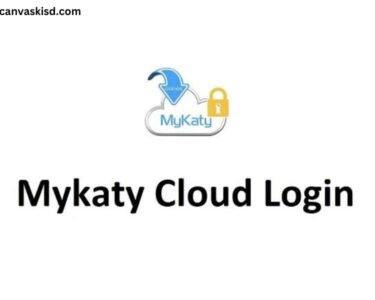Blockchain technology has gained significant attention in recent years, revolutionizing various industries and transforming the way we think about data storage, transactions, and trust. At its core, blockchain is a decentralized, distributed digital ledger that records transactions across many computers in a network. This innovative technology has the potential to disrupt traditional systems and provide a more secure, transparent, and efficient way of managing data and transactions.
In this comprehensive article, we will explore the intricacies of blockchain technology, its key components, advantages, applications, and the challenges it faces. We will also discuss the future prospects of this transformative technology and how you can get started with blockchain.
How Blockchain Technology Works
Blockchain technology operates on a peer-to-peer network, where each participant, or “node,” maintains a copy of the shared ledger. When a new transaction occurs, it is recorded as a “block” and added to the chain of previous transactions, forming a “blockchain.” This blockchain is cryptographically secured, ensuring the integrity and immutability of the data.
The process of adding a new block to the chain is called “mining,” and it involves verifying the transactions within the block. This verification process is carried out by network participants, known as “miners,” who use complex algorithms to solve mathematical problems. Once a miner successfully verifies the transactions, the block is added to the blockchain, and the miner is rewarded with a predetermined amount of cryptocurrency.
The decentralized nature of blockchain technology ensures that no single entity has control over the network. Instead, the network is maintained by all the participants, making it highly resistant to tampering or manipulation.
Key Components of Blockchain Technology
Blockchain technology is built upon several key components that work together to create its unique capabilities. These components include:
- Distributed Ledger: The blockchain acts as a decentralized, distributed digital ledger that records transactions across many computers in a network.
- Cryptography: Blockchain utilizes advanced cryptographic techniques, such as hashing and digital signatures, to secure the data and ensure its integrity.
- Consensus Mechanism: The network participants, or “nodes,” use a consensus mechanism, such as Proof of Work (PoW) or Proof of Stake (PoS), to verify and validate transactions, ensuring the network’s security and reliability.
- Smart Contracts: Blockchain-based smart contracts are self-executing agreements that automatically enforce the terms of a contract without the need for a third party.
- Transparency: The blockchain network is transparent, as all transactions are publicly visible and can be audited by anyone with access to the network.
- Immutability: Once a transaction is recorded on the blockchain, it becomes extremely difficult to alter or delete, ensuring the permanence and trustworthiness of the data.
Technology
Blockchain technology offers several compelling advantages that make it an attractive solution for various industries:
- Decentralization: The decentralized nature of blockchain eliminates the need for a central authority, reducing the risk of a single point of failure and increasing the overall security of the network.
- Transparency: The transparent nature of blockchain provides a clear and auditable record of all transactions, enhancing trust and accountability.
- Security: Blockchain’s cryptographic techniques and consensus mechanisms make it highly secure and resistant to tampering or hacking attempts.
- Efficiency: Blockchain-based transactions are faster, more efficient, and less costly compared to traditional centralized systems, as they eliminate the need for intermediaries.
- Traceability: Blockchain’s immutable ledger allows for the traceability of assets and transactions, which is particularly valuable in supply chain management and logistics.
- Disintermediation: Blockchain technology can disrupt traditional intermediaries, such as banks and financial institutions, by enabling direct peer-to-peer transactions without the need for a third party.
Applications of Blockchain Technology in Various Industries
Blockchain technology has the potential to revolutionize a wide range of industries, including:
- Finance: Blockchain-based applications can streamline financial transactions, facilitate cross-border payments, and enable the creation of new financial instruments, such as cryptocurrencies and decentralized finance (DeFi) platforms.
- Supply Chain Management: Blockchain can enhance supply chain transparency, traceability, and efficiency by tracking the movement of goods and materials throughout the supply chain.
- Healthcare: Blockchain can be used to securely store and manage patient records, facilitate data sharing between healthcare providers, and improve the overall efficiency of the healthcare system.
- Real Estate: Blockchain can simplify and streamline real estate transactions, automate the contract and title transfer process, and provide a secure and transparent record of property ownership.
- Voting and Governance: Blockchain-based voting systems can enhance the integrity and security of elections by providing a tamper-proof record of votes and reducing the risk of voter fraud.
- Energy and Utilities: Blockchain can enable the creation of decentralized energy trading platforms, facilitate peer-to-peer energy transactions, and improve the management of renewable energy sources.
Challenges and Limitations of Blockchain Technology
While blockchain technology offers numerous benefits, it also faces several challenges and limitations that need to be addressed:
- Scalability: Blockchain networks can struggle with scalability, as the processing of transactions and the maintenance of the distributed ledger can be resource-intensive, leading to slower transaction times and higher fees.
- Regulatory Uncertainty: The legal and regulatory landscape surrounding blockchain and cryptocurrency is still evolving, creating uncertainty for businesses and individuals looking to adopt this technology.
- Energy Consumption: The energy-intensive nature of some consensus mechanisms, such as Proof of Work, has raised concerns about the environmental impact of blockchain technology.
- Interoperability: Lack of interoperability between different blockchain networks can hinder the seamless exchange of data and assets across platforms.
- User Adoption: Widespread adoption of blockchain technology may be hindered by the complexity of the technology and the need for users to understand and trust the system.
- Privacy Concerns: While blockchain provides transparency, there are concerns about the privacy of personal and sensitive data stored on the blockchain.
Future Prospects of Blockchain Technology
The future of blockchain technology looks promising, with ongoing advancements and innovations that aim to address the current challenges and limitations. Some of the key developments and trends in the blockchain space include:
- Scalability Solutions: Researchers and developers are exploring various scaling solutions, such as layer-2 protocols, sharding, and sidechains, to improve the transaction throughput and efficiency of blockchain networks.
- Regulatory Clarity: As governments and policymakers gain a better understanding of blockchain technology, we can expect to see more comprehensive and clear regulatory frameworks emerge, providing greater certainty for businesses and individuals.
- Increased Interoperability: The development of cross-chain communication protocols and interoperability standards will enable seamless integration and data exchange between different blockchain networks.
- Advancements in Consensus Mechanisms: The continued evolution of consensus mechanisms, such as Proof of Stake and Delegated Proof of Stake, can help address the energy consumption concerns associated with blockchain.
- Broader Enterprise Adoption: As more businesses and organizations recognize the potential of blockchain technology, we can expect to see increased adoption and integration across various industries.
- Decentralized Finance (DeFi): The growth of decentralized finance applications built on blockchain technology is expected to continue, offering alternative financial services and products to traditional banking systems.
How to Get Started with Blockchain Technology
If you’re interested in exploring and getting started with blockchain technology, here are some steps you can take:
- Educate Yourself: Begin by learning the fundamentals of blockchain technology, its key components, and its various applications. There are numerous online resources, tutorials, and educational platforms available to help you gain a deeper understanding.
- Explore Blockchain Platforms: Familiarize yourself with popular blockchain platforms, such as Bitcoin, Ethereum, and Hyperledger, and understand their unique features and use cases.
- Experiment with Blockchain: Consider participating in blockchain-based projects or building your own decentralized applications (dApps) using open-source blockchain development tools and frameworks.
- Stay Up-to-Date: Follow industry news, attend blockchain-focused events and conferences, and engage with the broader blockchain community to stay informed about the latest trends, innovations, and best practices.
- Consider Blockchain Certifications: Pursue blockchain-related certifications to demonstrate your expertise and knowledge in this field, which can be valuable for career advancement or entrepreneurial opportunities.
Discover the transformative power of blockchain technology and explore its potential to revolutionize your industry. Contact our blockchain experts today to learn more about how you can leverage this innovative technology to drive your business forward.
Blockchain Technology and Cryptocurrency
Blockchain technology and cryptocurrency are often closely associated, as the first and most well-known application of blockchain was the creation of Bitcoin, the pioneering cryptocurrency. Cryptocurrencies are digital assets that use blockchain technology to enable secure, decentralized, and transparent transactions without the need for a central authority.
While blockchain technology can be applied to various industries beyond cryptocurrency, the two are intrinsically linked. Cryptocurrencies rely on blockchain’s distributed ledger and cryptographic principles to facilitate peer-to-peer transactions, store and transfer digital assets, and create new forms of digital money.
The rise of cryptocurrencies has led to the emergence of decentralized finance (DeFi) applications, which leverage blockchain technology to provide alternative financial services, such as lending, borrowing, and trading, without the involvement of traditional financial institutions.
As the adoption of blockchain technology continues to grow, the intersection between blockchain and cryptocurrency is expected to become even more prominent, with new use cases and innovations emerging in the years to come.
Conclusion
Blockchain technology has the potential to transform various industries, revolutionizing the way we store, manage, and exchange data and assets. From finance and supply chain management to healthcare and voting systems, blockchain’s decentralized, secure, and transparent nature offers a multitude of benefits that can disrupt traditional processes and create new opportunities.
While blockchain technology faces some challenges, such as scalability, regulatory uncertainty, and user adoption, the ongoing advancements and innovations in this field suggest a promising future. As more businesses and individuals explore the potential of blockchain, we can expect to see a continued expansion of its applications and a deeper integration into our daily lives.



